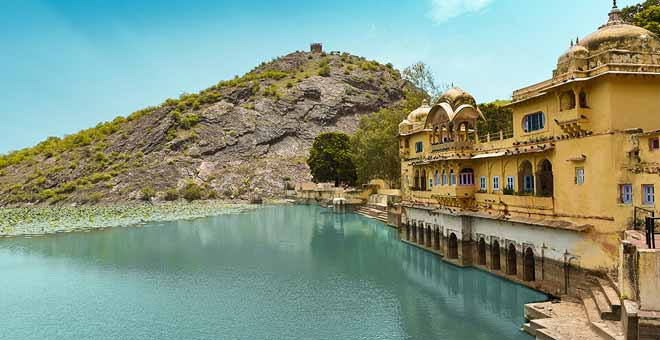
The Sukh Mahal in Bundi, India, is a charming and historically significant palace that has a captivating story associated with it. Built during the reign of Rao Raja Vishnu Singh in the late 18th century, the Sukh Mahal is a testament to the architectural grandeur of that era.
The name "Sukh Mahal" translates to "Palace of Bliss" in English, and it is said to have been constructed with a specific purpose in mind. The palace was built to provide a cool and pleasant retreat for the ruler during the scorching summer months of Rajasthan. Its unique location next to the Jait Sagar Lake allowed for natural cooling as the gentle breezes off the water refreshed the palace's interiors.
One of the most intriguing aspects of the Sukh Mahal is its association with a famous visitor, the renowned Scottish author Rudyard Kipling. It is said that Kipling stayed at the Sukh Mahal during his travels in India. Inspired by the beauty and serenity of the palace and its surroundings, he penned some of his most famous works here, including a part of his novel "Kim."
The Sukh Mahal's architecture reflects a blend of Rajput and Mughal styles, with its ornate balconies, frescoes, and the distinctive turquoise-blue tiles that adorn its exterior. Inside, the palace boasts intricately designed rooms, including the celebrated Anand Mahal, adorned with beautiful murals.
Over the years, the Sukh Mahal has witnessed the rise and fall of dynasties and experienced various historical events. Today, it stands as a well-preserved heritage site and a popular tourist attraction, drawing visitors from around the world who come to admire its historical significance, architectural beauty, and the poetic charm associated with it.
The Sukh Mahal in Bundi continues to be a place of inspiration and reflection, just as it was for Rudyard Kipling, and serves as a living testament to the rich history and cultural heritage of Rajasthan, India.